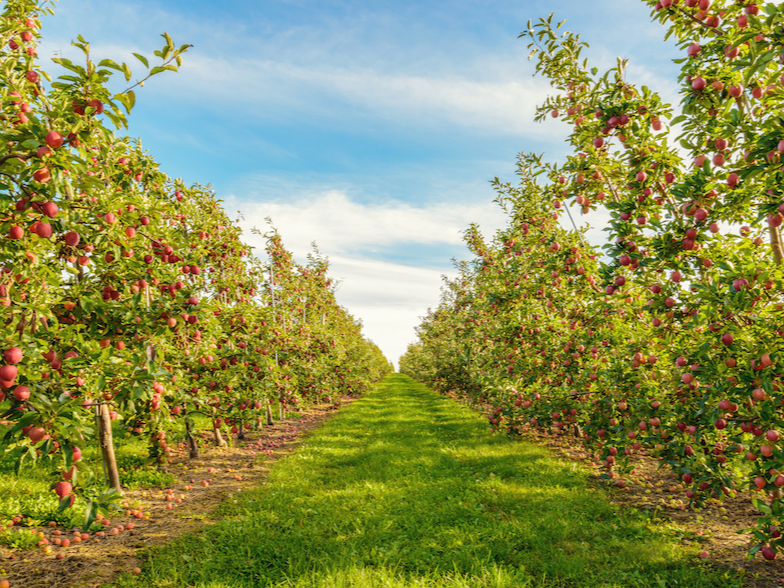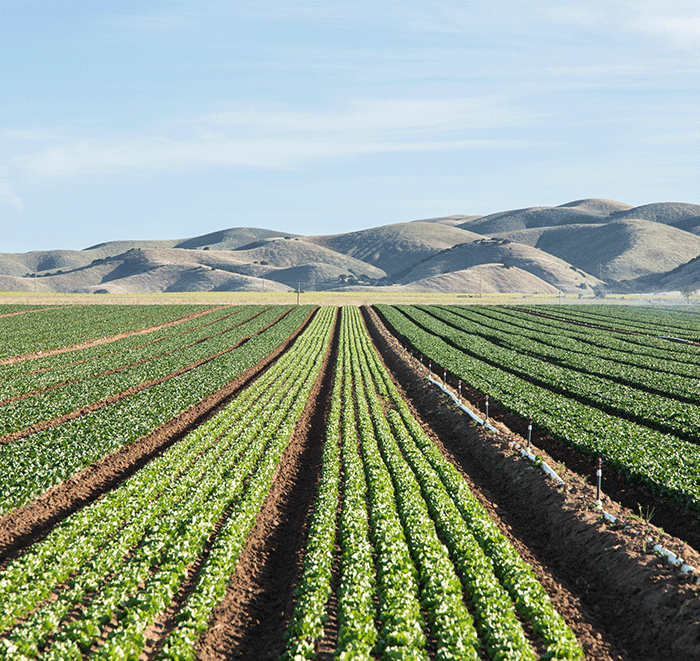
In Season Nutrient Requirement
The fruit trees are generally characterized by a low rooting density. Consequently, increased efficiency in nutrient supply requires timely, precise placement, and high retention in the root zone. Nutrient uptake by trees is determined by soil availability, root activity, and tree demand. Good management of nutrients requires that supply is matched to demand with amount, timing, and retention in the root zone so that roots can access nutrients. Fertigation allows such flexibility in the timing and precision of nutrient supply.
Fertigation is the simultaneous application of soil nutrients through irrigation water which provides the potential to synchronize nutrient supply more closely with plant nutrient demand. By fertigating, increased precision in the application of both water and nutrients can potentially be achieved with lower rates of application. This has the advantage of synchronizing nutrient supply with plant demand thus enabling reduction in the amount of nutrients applied and reducing environmental impact. The timing of fertigation can be manipulated to match the greatest tree N demand. The importance of N reserves for early season N requirements of apple has long been utilized. The optimum timing of fertigation in the post-petal fall can be determined based on tree phenology, offering improved precision.
It is important to avoid the degradation of soil health receiving fertigated nutrients. This includes preventing the development of excessive soil salinity from overfertilization and avoiding soil pH decline or associated depletion of soil bases including K. Fertigation with acidic fertilizers through drip systems can be detrimental in coarse-textured soils, as it can result in soil acidification. It may be necessary to avoid ammonium fertigation on soils with limited resistance to acidification.
The highest demand for nitrogen (N) in the orchard occurs from petal fall to the end of shoot growth. During this period, rapid shoot growth and fruit cell division require substantial amounts of nitrogen. Fertigation is the preferred application method for N during the season, as these applications can be made from bloom to the end of shoot growth to match peak N demand. For sandy soils with low organic matter, multiple split applications from spring through early summer would be more desirable to limit nutrient loss.
Fertigation can also be effective in improving the uptake of nutrients such as phosphorus (P) and potassium (K). The P is considered to have reduced availability in the soil, due to precipitation, soil pH, and chemical exchange processes which decrease its solubility. Fertigation is known to increase P mobility in sandy soils and enhance availability in roots. The fruit tree has constant demands for K from bloom to harvest as K has the highest concentration in the fruit of all the required macronutrients. Not all varieties are equal in their K needs as honeycrisp requires lower K inputs compared to other varieties. However, the fertigation of large amounts of K in apple orchards requires caution due to the potential to develop high fruit K/Ca ratio which is connected to reduced apple storage quality.
Targeted foliar application for calcium and micronutrients
Foliar nutrient applications at much less application rates than those applied via broadcast, band, or fertigation applications can help improve nutrient precision with acceptable tree performance. This has also been the preferred method for maintaining leaf nutrient concentrations for essential micronutrients such as boron, zinc, manganese, iron, and copper. Foliar sprays have also been the preferred method for increasing the calcium concentrations of apple fruit which is a necessary precaution to avoid Ca-related disorders of the fruit, such as bitter pit. This method can be effective in improving Ca deficiencies that develop within the fruit in the growing season.
Calcium accumulation occurs during the entire fruit growth period from petal fall to fruit harvest. In addition to having proper soil pH and maintaining trees, a foliar Ca spray program is essential for bitter pit susceptible cultivars. Frequent sprays are more important than the exact timing of the sprays.

Conclusion
Fertigation offers the potential to overcome soil fertility by providing critical nutrients in the root zone. Efficient use of nutrients, however, depends on reducing excessive water drainage and improving nutrient uptake. The ammoniacal fertilizers can acidify the soil along with a loss of bases and soluble nutrients immediately under the emitters of drip irrigation systems. We have resources, proprietary methods, and subject matter experts in the Wilbur-Ellis cascade to continuously advance our approach to enhancing soil productivity and agronomy in tree fruit.
Bibliography
Neilsen, G.H., and Neilsen, D. 2003. Nutritional requirements of apple. In: D.C. Ferree and I.J. Warrington, eds. Apples: Botany, production and uses. CABI Publ., Oxford, UK. p. 267–302.
Sallato B, DuPont, T., and Granatstein, D. 2022. Tree Fruit Soil Fertility and Plant Nutrition in Cropping Orchards in Central Washington. WSU extension.
Bodh Paudel // Tech Nutrition Agronomist


